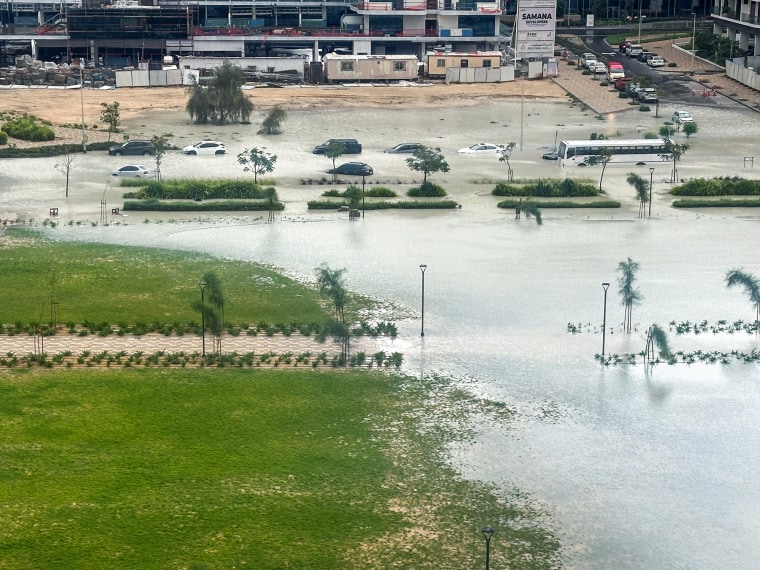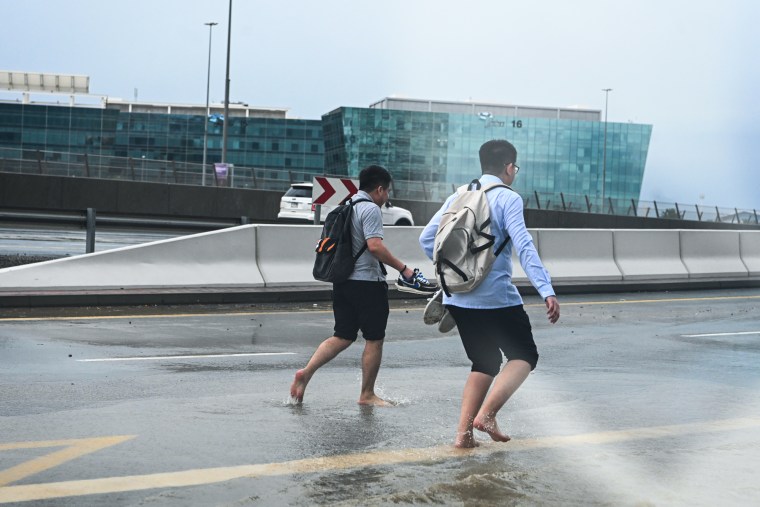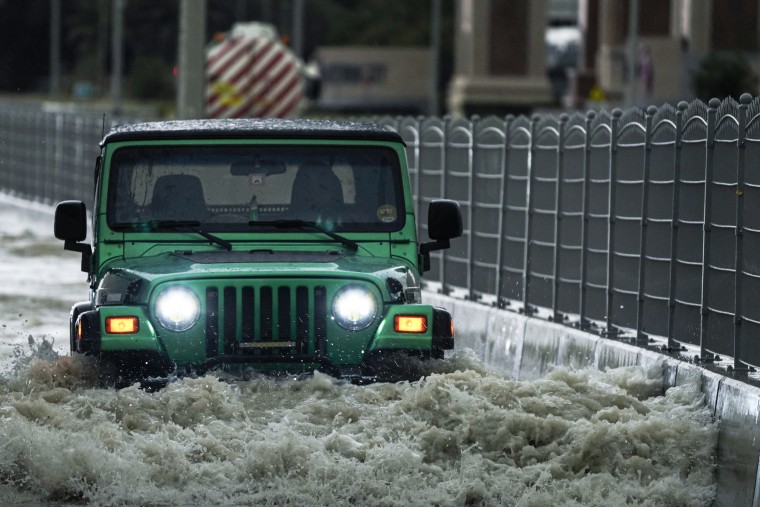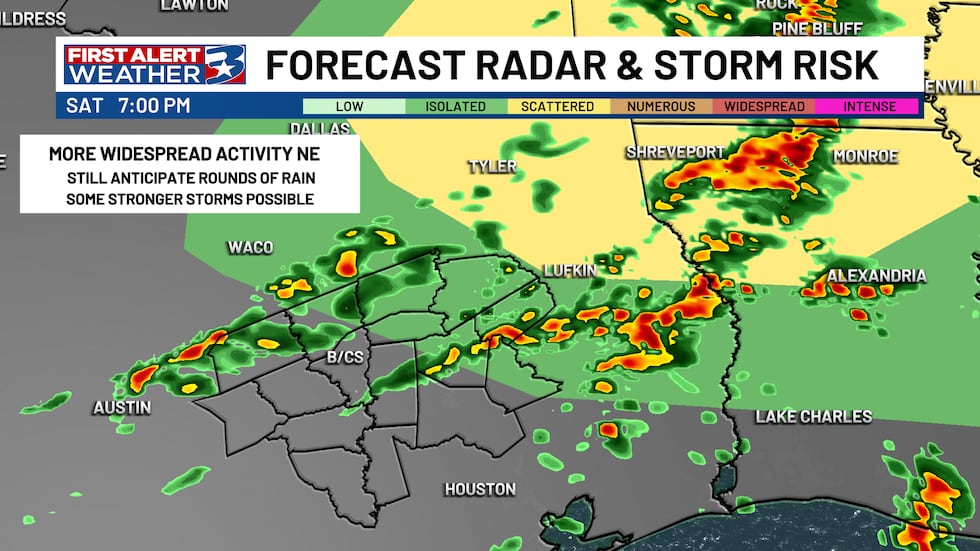Heavy rains battered parts of the Middle East on Tuesday, closing schools in the United Arab Emirates and flooding the tarmac at Dubai International Airport. In Oman, at least 18 people have died in recent days because of the severe weather.
The storms swamped roadways and created dangerous conditions across the region, a normally arid part of the world that is unaccustomed to intense rain and flash flooding.
Flights into the Dubai airport were temporarily diverted as a result of the “continued exceptional weather event currently being experienced in the UAE,” airport officials said Tuesday in a statement.

Video obtained by Saudi Arabia’s state-owned news outlet Al Arabiya showed the tarmac in Dubai inundated, with airplanes skimming through floodwaters and support vehicles nearly submerged.
More than 4.7 inches of rain fell in a day in the UAE, flooding streets across Dubai and sending water spilling into homes and businesses, The Associated Press reported.
The UAE’s National Emergency Crisis and Disaster Management Authority urged people to stay home, saying on X that cars should be parked in “safe and elevated locations,” away from flood-prone areas and places where water can accumulate.

Private schools across the UAE were closed ahead of the stormand government employees were instructed to work remotely.
The UAE is known for its dry conditions and arid climate, but it can get occasional precipitation in the winter.
In neighboring Oman, storms and heavy rain in recent days killed 10 schoolchildren and an adult driver in a vehicle that was overtaken by floodwaters, according to the AP.

Other parts of the Middle East, including Qatar and Saudi Arabia, were also hit by unusually wet conditions this week.
It’s too soon to know whether global warming played a role in the recent storms, but studies have shown that a warmer atmosphere due to climate change can hold more moisturewhich in turn can fuel more severe storms and intense rain.

















































